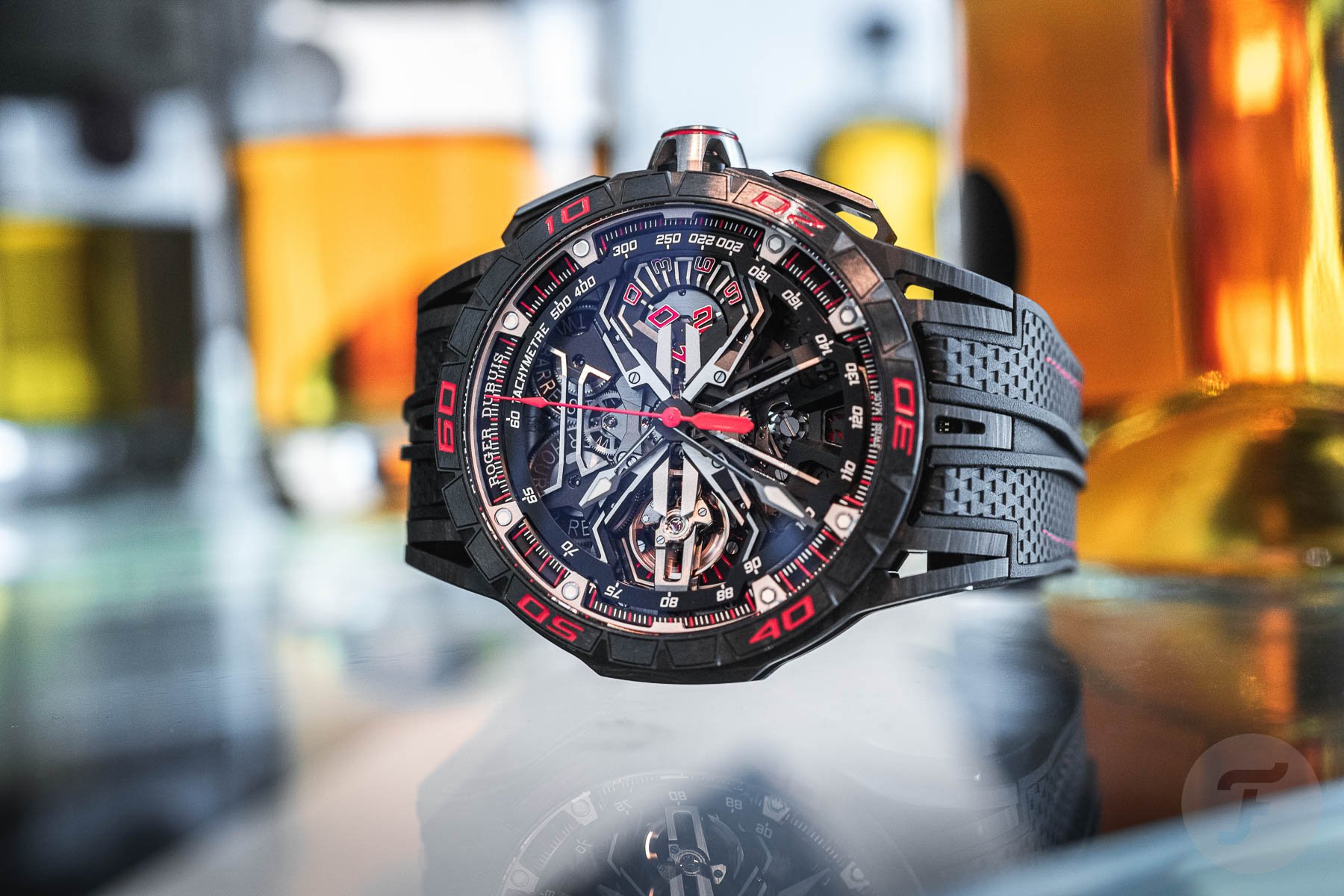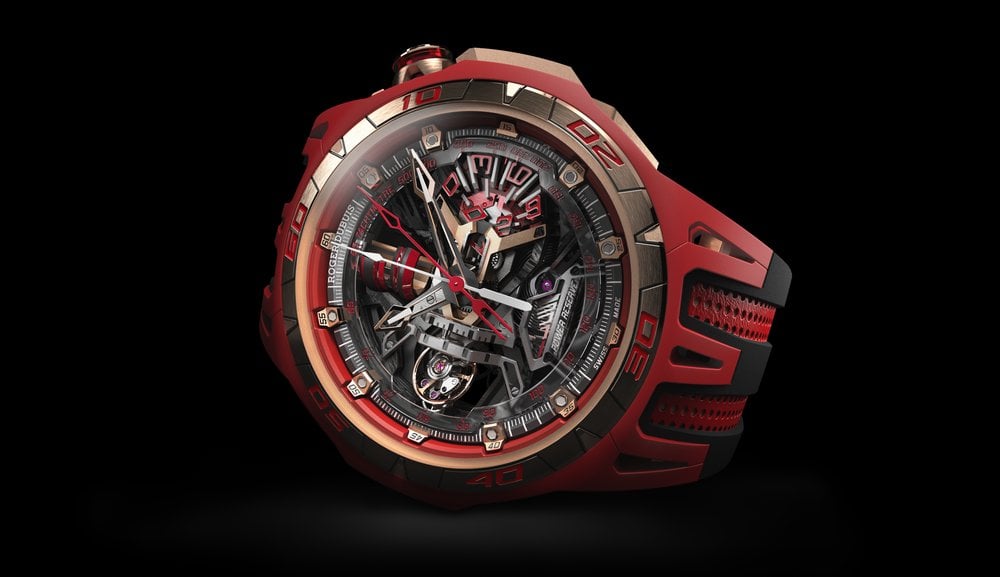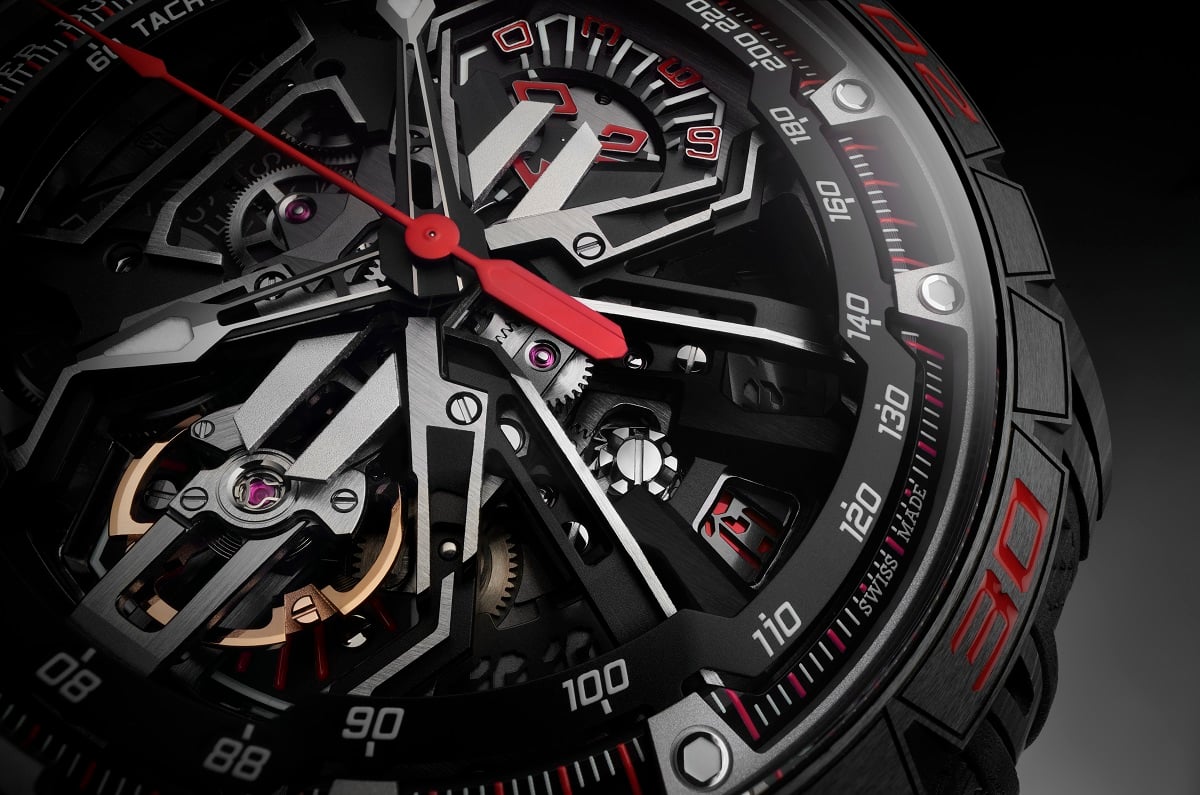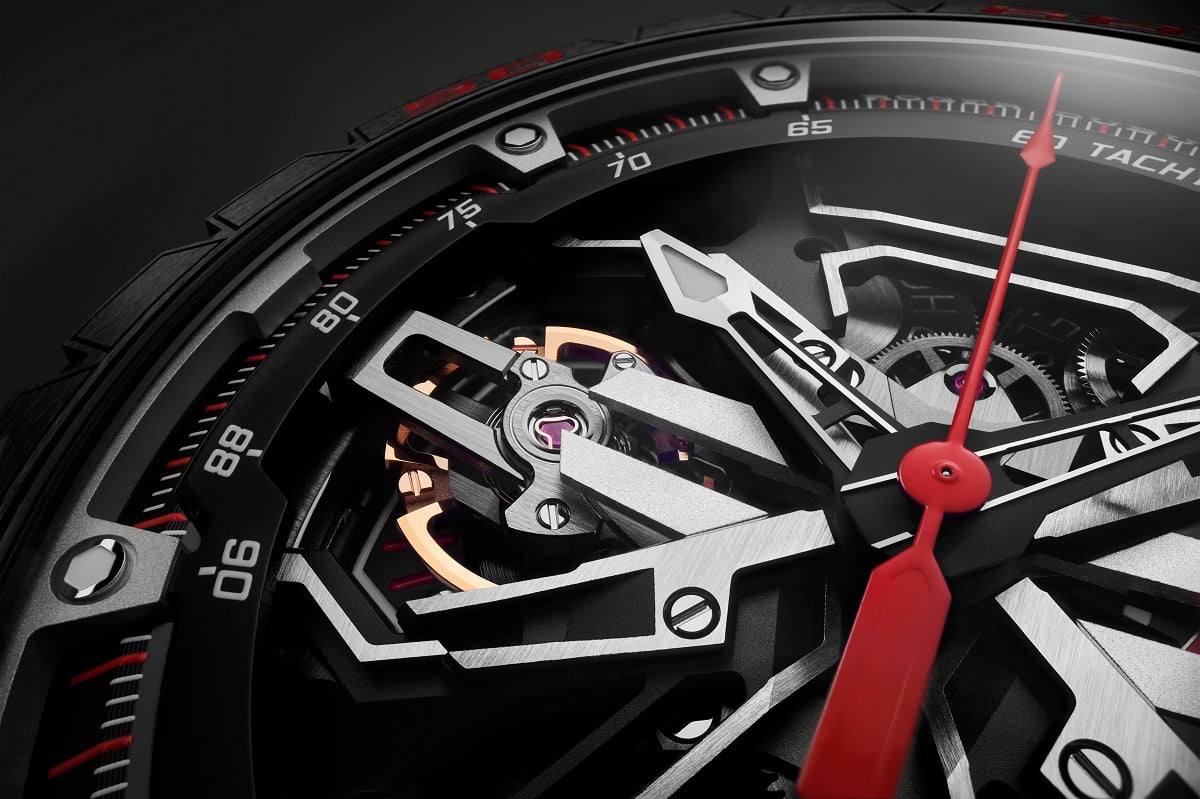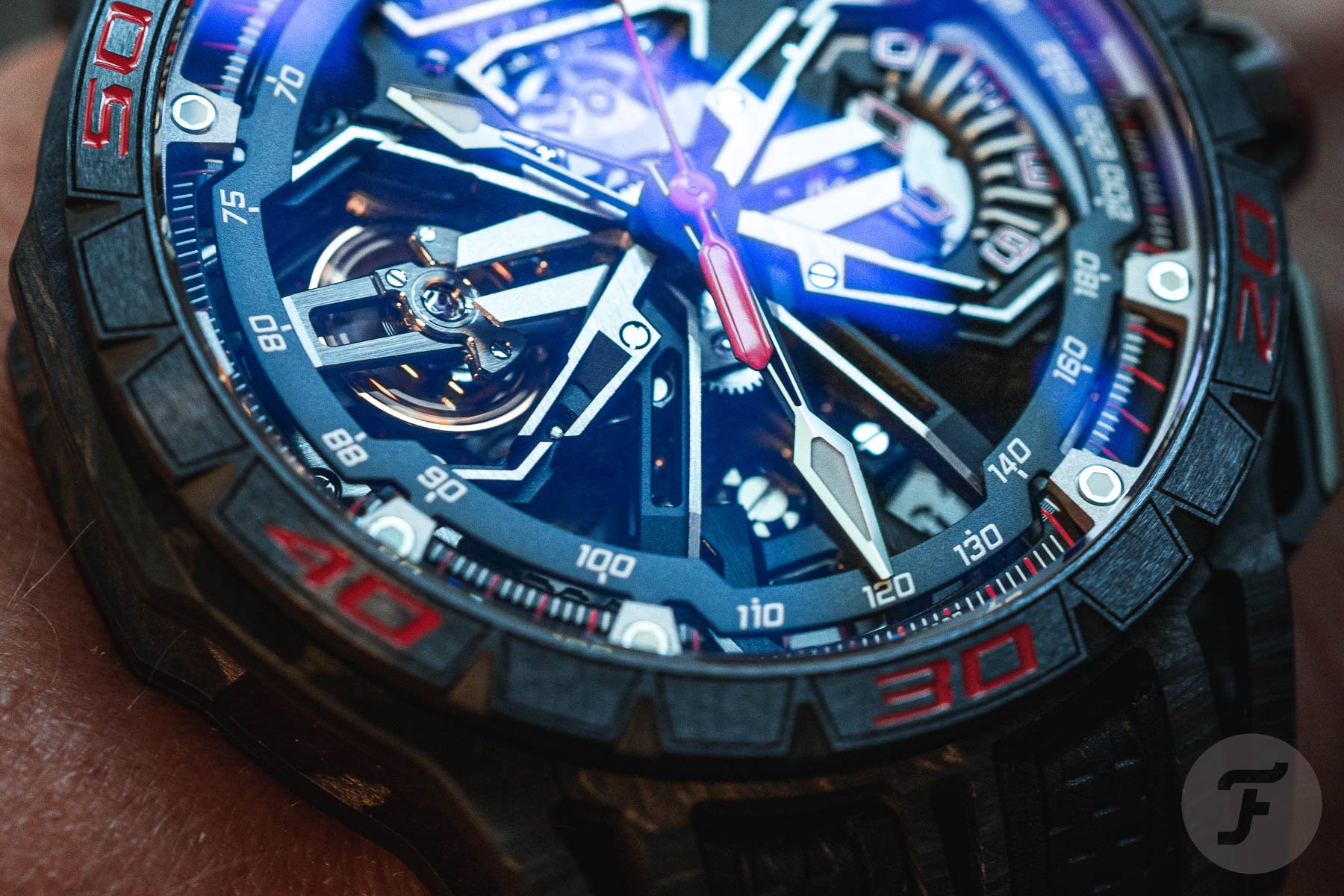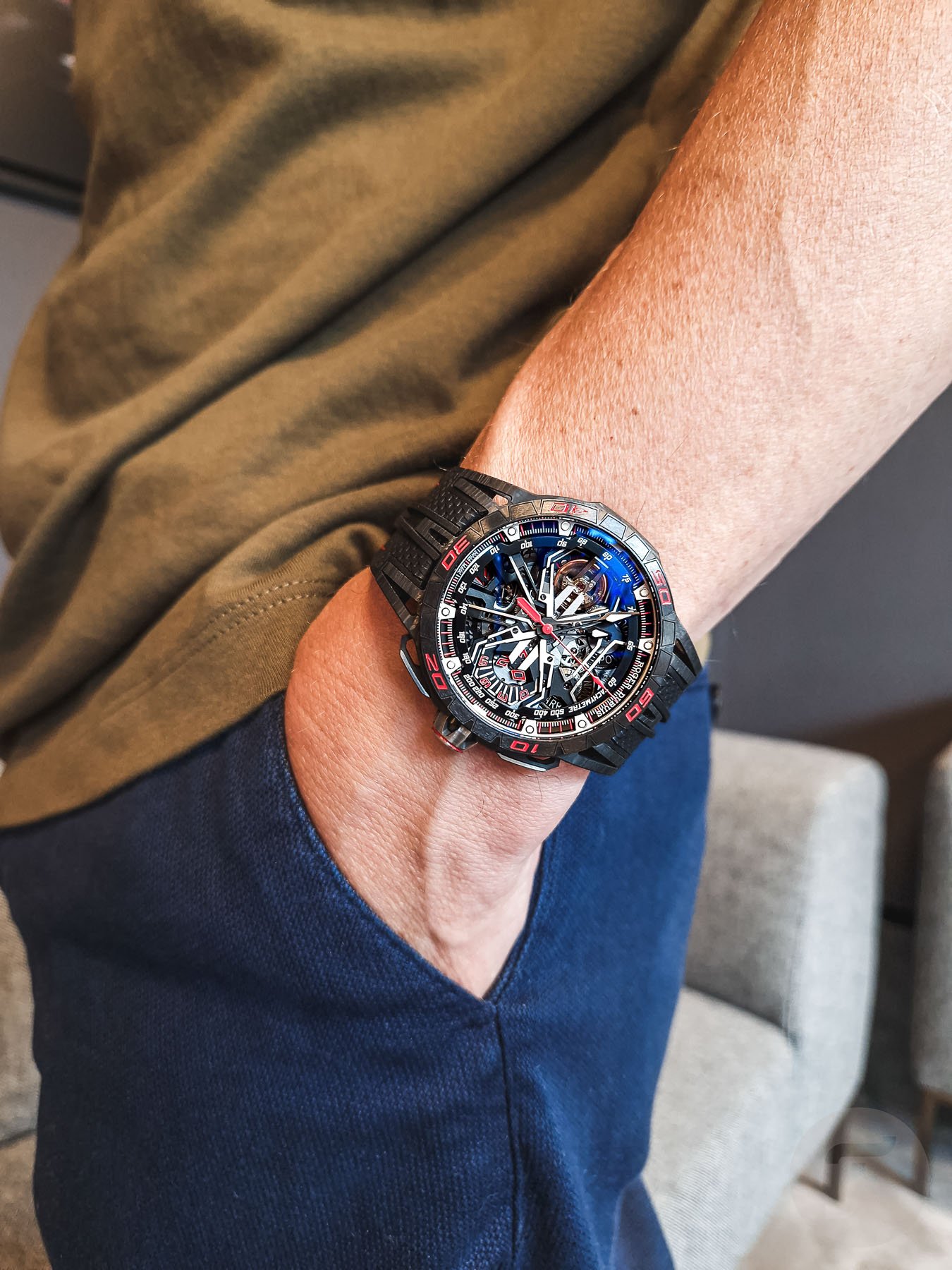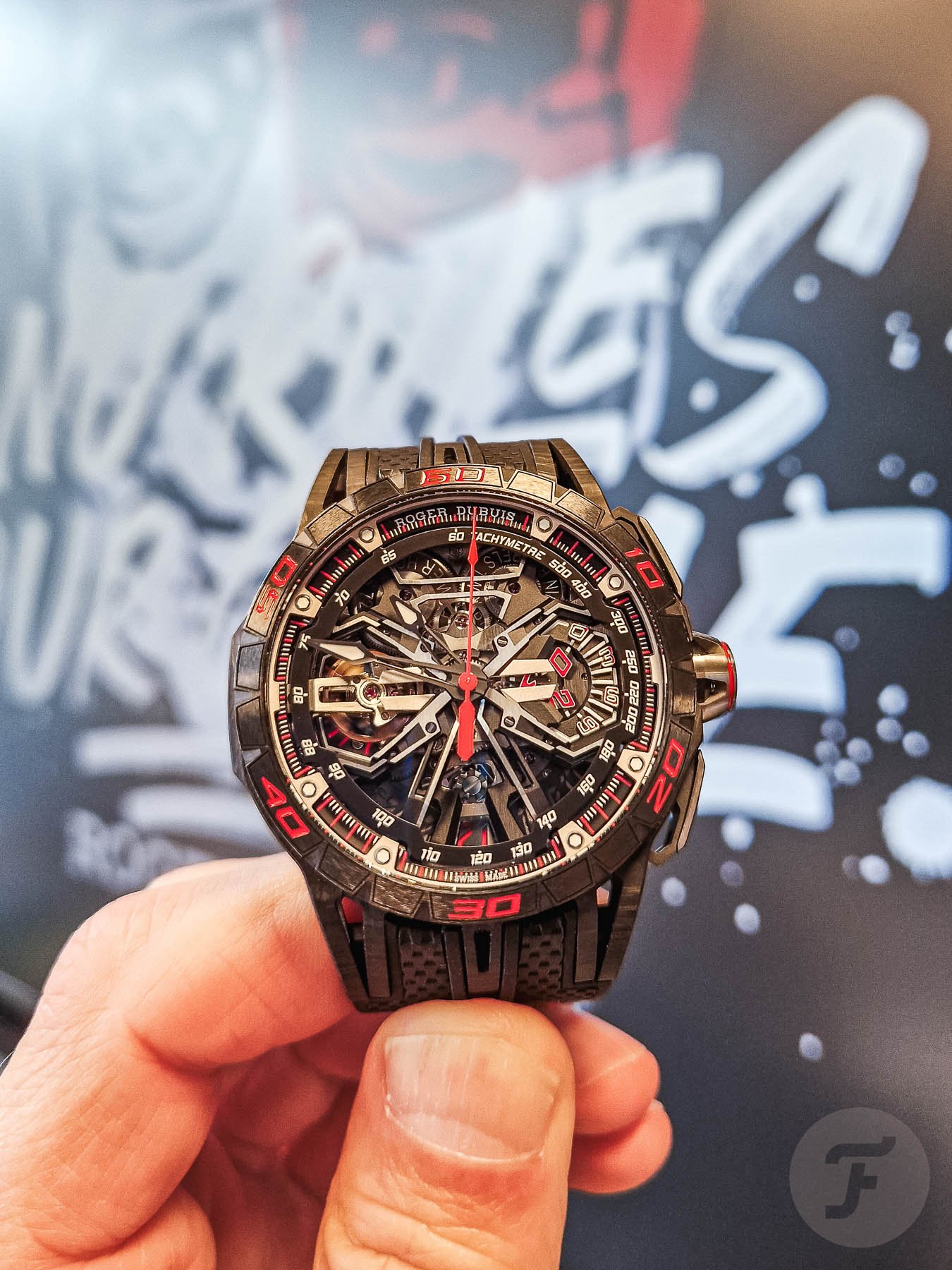Introducing The Roger Dubuis Excalibur Spider Flyback Chronograph (Live Pictures)
Sometimes you need to start very close up to appreciate the big picture. The best way to appreciate a Roger Dubuis watch that comes with the Poinçon de Genève stamp of approval is by doing just that. The exterior design of the new Excalibur Spider Flyback Chronograph (DBEX1046) is as loud, bold, and exuberant as you would expect. But even if the polarizing design language of the Meyrin-based brand is too extreme for your liking, the RD780 movement inside the new watch — Roger Dubuis’s fifth chronograph caliber and its first with a flyback function — will enchant even the most skeptical watch aficionados.
An inside-out approach to looking at watches is only appropriate when dealing with timepieces housing the finest of movements. No disrespect, but using this method on a watch with a Sellita SW200 on display will end in utter disappointment. But it does work on creations with exquisite mechanical calibers. An inside-out look on a watch with a movement that is manually finished to perfection, that uses new watchmaking techniques, and that consists of, let’s say, 334 components will dazzle you to the point that you will no longer judge the watch by its “cover.” Now, let’s take a look at a watch from a maker of hyper-horology that leads to hyper-polarizing opinions. This is the new Roger Dubuis Excalibur Spider Flyback Chronograph.
Roger Dubuis Excalibur Spider Flyback Chronograph: the future of traditionalism
The first chronograph with the brand name Roger Dubuis on the dial debuted in 1995. That watch, the distinctly shaped Sympathie Bi-Retrograde Perpetual Calendar Chronograph, was outfitted with the caliber RD5637, a complicated movement that used the Lemania 2310 as a base. Four chronograph movements later, the caliber RD780 debuts. This caliber shows some likeness to the futuristic movement inside the Monovortex Split-Seconds Chronograph, a concept watch that took center stage in Roger Dubuis’s Watches and Wonders exhibition space.
The new caliber is a futuristic-looking, fully integrated chronograph that bears the traditional Poinçon de Genève. To attain this prestigious certification, the movement needs to be made in the canton of Geneva, decorated by hand, and can only deviate less than 60 seconds per week. The skeletonized movement has been built from scratch and shows several interesting technical features, some traditional and some never seen before.
Patent-pending braking
Worshipers of the chronograph always look for one feature first — a column wheel. It’s a legendary component that ensures the pushers are much smoother to operate than with a cam, and it’s also a symbol of fine watchmaking. To make sure nobody misses the column wheel, RD’s R&D team made it visible from the dial side of the watch at 6 o’clock. As you would expect, the chronograph mechanism also features a vertical clutch. This feature improves precision because the gearing goes up and out as the column wheel turns in one swift, direct movement. It makes the starting and stopping of the seconds hand crisp and precise. Furthermore, the clutch is outfitted with a new patent-pending Second Braking System (SBS). This component decreases “flicker” and also stabilizes the chronograph seconds hand.
Angled and precisely balanced
Roger Dubuis is the self-proclaimed inventor of the hyper watch, so where are the hyper-crazy watch parts? Look at 3 o’clock. There you will find the unusual 120° Rotating Minute Counter (RMC) with its edgy, isotaxal shape. And just like in the Monovortex concept watch, the minute counter includes a patent-pending hand consisting of three parts. The three parts of the hand carry the 0, 1, and 2, and that hand rotates past the 0 to 9 digits, making it act as an analog 30-minute counter. It is easy to read yet complex to construct.
Another interesting feature of the very symmetric-looking movement is the tilted balance wheel at 9 o’clock. According to RD, tilting the balance 12 degrees results in better protection from shocks. But it also raised its level of inertia to the same standard as a tourbillon. Other features that help improve the regulating organ are an antimagnetic, diamond-coated silicon escapement wheel that’s matched with diamond-coated silicon pallet stones. Furthermore, the five-arm, rim-like rotor that maintains the movement’s 72-hour power reserve carries a secret. It looks fully symmetrical, but it still spins like a conventional rotor.
The extreme outside
It’s time to zoom out now. Things will get a bit more polarizing. You can’t argue with hand-finished complications, but you can argue about design and aesthetics endlessly. Let’s first look at the objective numbers and specifications of the Excalibur Spider Flyback Chronograph (CHF 90,000 before taxes). The 45mm case is crafted from carbon fiber, and the notched bezel still looks like it’s cut by King Arthur’s sword. The notches on the ceramic bezel can also be found on other parts of the watch. If you have seen an Excalibur before — the watch, not the sword — you might notice something different. Design evolution has led to a more refined, more dynamic case with differently shaped, more curving lugs and a new strap.
The attention to detail and finishing inside the watch can also be observed on the outside. There are skeletonized pushers, for instance. And the architectural and three-dimensional dial also has a lot to offer visually. There’s the floating tachymeter scale, the deeply placed date indicator at 6 o’clock, and the sharp, open-worked hour and minute hands.
Rubber on the wrist
Straps are often an afterthought for watch companies. That’s a bad thing. But over-designing a strap is the other extreme. The black rubber strap on the Excalibur Spider Flyback Chronograph is over the top. “Just like the watch,” you could say. Maybe, but to my taste, the very present, voluminous strap with its notches and patterns draws too much attention. And the folding clasp it comes with is too complicated for me. I know a butterfly clasp is (supposedly) luxurious, but on a rubber strap, a well-shaped pin buckle works just as well and even fits the sporty theme of the chronograph better.
If you don’t like the black rubber strap, there’s good news. It has Roger Dubuis’s Quick Release System, allowing for rapid strap changes. But to what strap? I don’t know. I would want to swap the strap for a matching bracelet in ceramic. The Excalibur Monobalancier Titanium 42 is proof that a bracelet works really well for a watch with a case that has so much going on visually.
A final perspective on the Excalibur Spider Flyback Chronograph
We’ve zoomed in, we’ve zoomed out, and now it’s time to see the full picture. Since master watchmaker Roger Dubuis founded his brand back in 1995, a lot has happened. The man who was an icon of the industry was pushed out of the company by Carlos Dias, who turned the brand from a creator of traditional yet originally composed complicated watches into the producer of grandiose and opulent timepieces that were complicated to appreciate. The name-giver returned after Richemont got a majority stake in Roger Dubuis in 2008 and full ownership in 2016. Roger Dubuis himself, one of the first watchmakers of his time who dared to start an independent brand of his own, died in October 2017. The 2023 Roger Dubuis creations don’t look anything like the Sympathie Bi-Retrograde Perpetual Calendar Chronograph of the 1990s, but still, there are likenesses in spirit. Think original shapes, complications, and ways of displaying functions.
Would Roger Dubuis himself approve of the new Excalibur Spider Flyback Chronograph? Most definitely. Monsieur Dubuis had an open mind and was curious and adventurous. He wasn’t afraid to experiment and push boundaries, and that’s precisely what RD does with the Excalibur Spider Flyback Chronograph. An open mind is the best way to approach something as complicated and unconventional as a modern-day Roger Dubuis creation. Just free your mind, and the rest/watch will follow.
For more information, please visit the official Roger Dubuis website.

